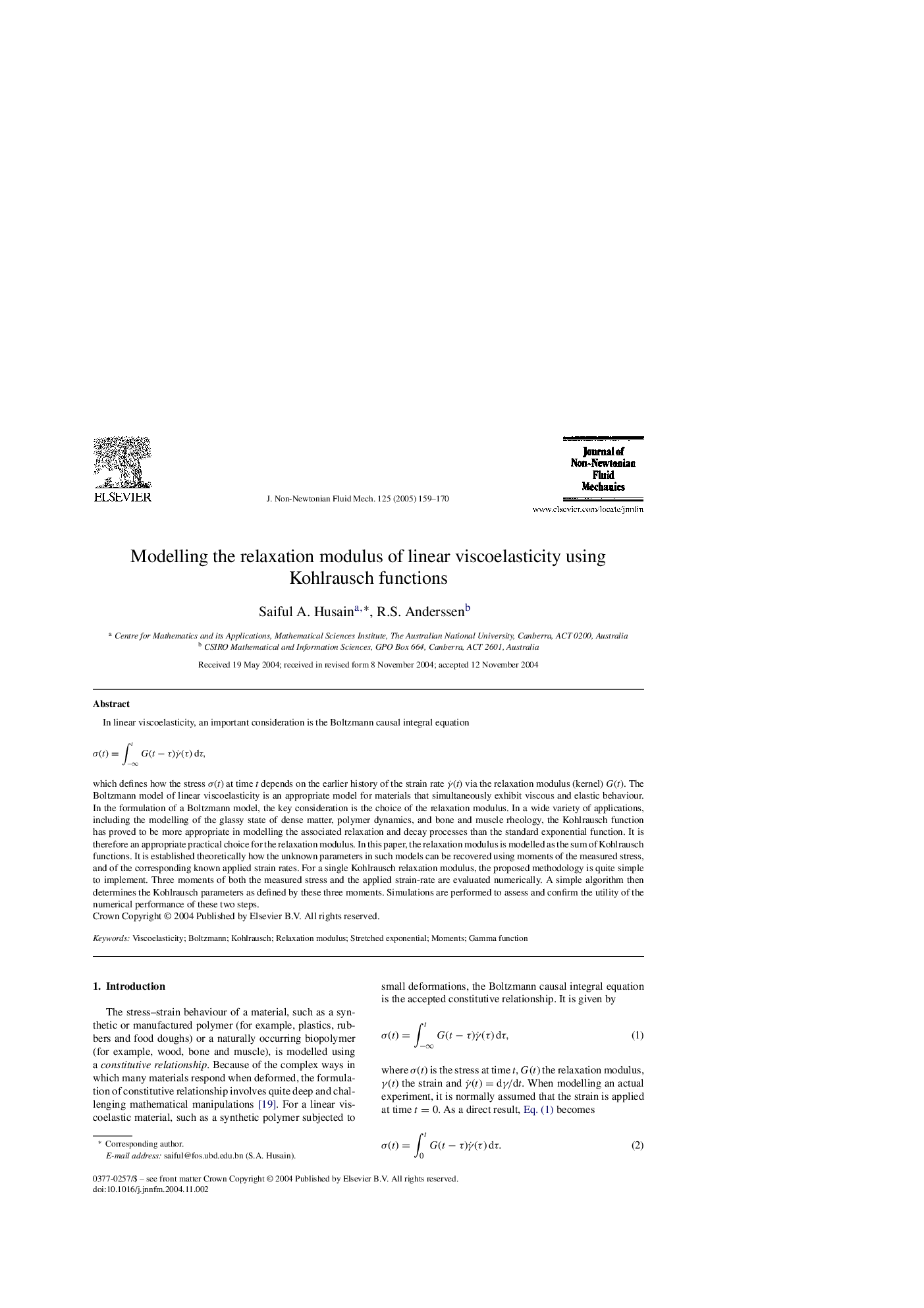| Article ID | Journal | Published Year | Pages | File Type |
|---|---|---|---|---|
| 9693463 | Journal of Non-Newtonian Fluid Mechanics | 2005 | 12 Pages |
Abstract
In linear viscoelasticity, an important consideration is the Boltzmann causal integral equationÏ(t)=â«ââtG(tâÏ)γË(Ï)dÏ,which defines how the stress Ï(t) at time t depends on the earlier history of the strain rate γË(t) via the relaxation modulus (kernel) G(t). The Boltzmann model of linear viscoelasticity is an appropriate model for materials that simultaneously exhibit viscous and elastic behaviour. In the formulation of a Boltzmann model, the key consideration is the choice of the relaxation modulus. In a wide variety of applications, including the modelling of the glassy state of dense matter, polymer dynamics, and bone and muscle rheology, the Kohlrausch function has proved to be more appropriate in modelling the associated relaxation and decay processes than the standard exponential function. It is therefore an appropriate practical choice for the relaxation modulus. In this paper, the relaxation modulus is modelled as the sum of Kohlrausch functions. It is established theoretically how the unknown parameters in such models can be recovered using moments of the measured stress, and of the corresponding known applied strain rates. For a single Kohlrausch relaxation modulus, the proposed methodology is quite simple to implement. Three moments of both the measured stress and the applied strain-rate are evaluated numerically. A simple algorithm then determines the Kohlrausch parameters as defined by these three moments. Simulations are performed to assess and confirm the utility of the numerical performance of these two steps.
Related Topics
Physical Sciences and Engineering
Chemical Engineering
Fluid Flow and Transfer Processes
Authors
Saiful A. Husain, R.S. Anderssen,
